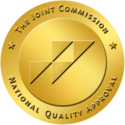What’s the most addictive drug? The answer isn’t as simple as you might think. Addiction doesn’t look the same for everyone. What hooks one person might not have the same effect on another.
But when experts rank drugs by addictive potential, they consider things like how intense the high is, how brutal the withdrawal can be, how fast someone can get hooked, and how easy it is to get a hold of the drug. While there’s no single “most addictive” drug, understanding these factors can shed light on which substances pose the highest risks.
The 10 Most Addictive Drugs: A Closer Look
From everyday substances like caffeine to potent opioids like fentanyl, certain drugs hold a particularly strong grip on the brain and body, often requiring a detox in Idaho to safely remove them from the system.
Caffeine is one of the most widely consumed psychoactive substances, found in coffee, tea, soda, and energy drinks. It works by blocking the receptors for adenosine, a neurotransmitter that promotes sleep, resulting in increased alertness and energy. It is not making a person less tired as much as making it harder for a person to detect how tired they feel.
When caffeine intake is reduced or stopped, withdrawal symptoms such as headaches, fatigue, and irritability can be activated. While caffeine dependence is not as severe as other addictions, it is widespread due to its easy accessibility and presence in everyday products. It is so ingrained in daily routines that most users don’t even consider it a drug, further masking its addictive potential.
Nicotine, found in cigarettes, cigars, vaping products, and smokeless tobacco, is a fast-acting stimulant that reaches the brain within seconds. It rapidly releases dopamine, reinforcing smoking behavior and promoting addiction. Over time, the brain relies on nicotine to release dopamine, making quitting particularly challenging. The addictive nature of nicotine is heightened by its frequent pairing with daily routines, such as smoking after meals or during stressful moments.
Nicotine withdrawal can include intense cravings, irritability, anxiety, and insomnia, often beginning just hours after the last cigarette. Despite growing restrictions, tobacco products remain widely available, keeping nicotine one of the most difficult substances to quit. The accessibility of vaping products has further complicated efforts to reduce nicotine dependence, as younger populations are increasingly exposed to these seemingly safer alternatives.
Alcohol is a central nervous system depressant that is socially accepted and legally accessible worldwide. It enhances GABA’s calming effects while also releasing dopamine, creating a pleasurable, relaxing sensation. Chronic alcohol use alters brain chemistry, leading to tolerance and dependence. The normalization of alcohol use in social settings often blurs the line between casual drinking and problematic behavior.
Withdrawal can range from mild symptoms like nausea and tremors to severe conditions such as delirium tremens (DTs), involving confusion, seizures, and hallucinations. Despite its risks, alcohol remains widely consumed and heavily marketed, making it highly accessible. Its presence in family gatherings, parties, and celebrations makes it particularly difficult for those trying to quit, as they are constantly surrounded by social triggers.
Opioids like oxycodone, hydrocodone, and morphine are frequently prescribed for pain relief but carry a high risk of addiction. They bind to opioid receptors in the body, blocking pain while releasing intense waves of euphoria. Repeated use reduces natural endorphin production, leading to dependence. The misuse of prescription opioids often begins with a legitimate prescription, blurring the line between medical use and addiction.
Withdrawal symptoms can include severe muscle pain, vomiting, chills, and intense cravings, making quitting extremely difficult. Prescription opioids are legally accessible through medical channels, but are also widely diverted and sold illegally. In many cases, users turn to cheaper and more accessible street opioids (such as injectable heroin) when their prescriptions run out or become too expensive.
Fentanyl is a synthetic opioid that is 50 to 100 times more potent than morphine and is prescribed for severe pain but also manufactured and sold illegally. Even tiny amounts can cause intense euphoria, rapid tolerance, and a high risk of overdose. Its potency makes it extremely dangerous, as dosing errors can easily be fatal, particularly when users are unaware they are consuming it.
Withdrawal symptoms are similar to other opioids but can be more intense, including severe pain, vomiting, chills, and cravings. The widespread availability of illicit fentanyl, often mixed with other drugs, has significantly increased overdose deaths. It is frequently found contaminating heroin, cocaine, and counterfeit opioid pills, putting unsuspecting users at extreme risk.
Methamphetamine, or meth, is a potent stimulant that triggers a massive dopamine release, producing intense euphoria and increased energy. The pleasurable effects can last for hours, making it highly addictive and destructive to brain function. Meth’s powerful high is often followed by a severe crash, compelling users to use repeatedly to maintain the initial euphoria.
Withdrawal is severe and prolonged, involving depression, paranoia, and intense cravings that can last for weeks. Meth is primarily produced in clandestine labs and remains a prevalent street drug, contributing to its widespread abuse. Long-term use can cause irreversible brain damage, impacting memory, cognitive function, and emotional stability.
Powdered cocaine is a powerful stimulant derived from coca plant leaves, while crack cocaine is a smokable form of the drug that delivers a rapid but intense high. Both work to inhibit dopamine reuptake, causing a surge of euphoria and alertness. Crack cocaine’s intense, short-lived high can make it even more addictive than straight cocaine.
Withdrawal is primarily psychological, and can involve intense feelings of depression, fatigue, paranoia, and intense cravings. Despite its high potential for dependence, cocaine remains widely available in illegal markets. This can increase the risk of rapid addiction. The repetitive binge-crash cycle of cocaine use can quickly escalate from occasional use to severe addiction.
Heroin, derived from morphine, rapidly enters the brain and produces a powerful euphoric rush followed by sedation. This effect can strongly reinforce drug-seeking behavior, leading to rapid tolerance and severe dependence. The intensity of heroin’s high can trap users in a relentless cycle of seeking the next dose.
Withdrawal can begin within hours of the last dose and is often severe, involving muscle pain, vomiting, chills, and intense cravings. Heroin is commonly mixed with other substances (like fentanyl), which can increase the risk of overdose. The unpredictable potency of street heroin makes it even more dangerous, as users often have no idea how strong each dose will be.
Benzodiazepine pills, or benzos, include prescription drugs like Xanax, Valium, and Ativan that are used to treat anxiety, insomnia, and seizures. They enhance GABA’s calming effects, creating a sedative, euphoric state that can quickly become addictive. Even short-term use can lead to dependence.
Despite being prescription medications, benzos are frequently misused, often contributing to dependence and overdose. Abrupt cessation can result in a severe rebound effect, intensifying the symptoms they were initially prescribed to alleviate. Withdrawal can be severe and even life-threatening, with symptoms like anxiety, tremors, seizures, and psychosis.
Marijuana (cannabis) mainly refers to buds of the cannabis sativa plant. As a drug, people have options to smoke it, consume it as a tincture or in baked goods (made with infused butter), apply it topically, or smoke it in the form of highly concentrated “dabs.” While considered less addictive than other drugs, heavy use of cannabis can lead to dependence. The growing legality of cannabis for recreational use makes it particularly accessible for those who may be inclined toward addiction.
Withdrawal symptoms for cannabis are generally milder than other substances but can still include irritability, depression, sleep disturbances (including nightmares), and decreased appetite. Chronic use, especially among young users, can impact cognitive development, impair memory, and aggravate mental health symptoms for disorders such as anxiety
Receive Help for Addiction at Eagle Creek Ranch Recovery
Overcoming addiction can be a challenging journey, but with the right support and a caring environment, recovery is possible. If you or someone you care about is struggling with substance use, taking the step to seek help is a powerful act of courage.
Located in Nampa, Idaho, Eagle Creek Ranch Recovery provides a peaceful, caring atmosphere for men ready to embark on the road to recovery. Situated in the beautiful Treasure Valley, our facility offers a compassionate environment that fosters personal development and helps individuals rediscover their sense of purpose. Contact us today to learn more.

Clinical Director
Kendall Maloof is the clinical director at Eagle Creek Ranch Recovery. She is a licensed marriage and family therapist and has held multiple leadership roles before settling here at Eagle Creek Ranch Recovery. Kendall received her master’s degree in marriage and family therapy from the Chicago School of Professional Psychology in 2016. Her career in mental and behavioral health began in 2014 when she took up internships in both the nonprofit and for profit sectors. She interned at multiple reputable companies, such as The Living Success Center and 449 Recovery in California.
In 2019, Kendall became the clinical director of Sunsets Recovery for Woman, a dual diagnosis program in southern California. Kendall is a natural leader. She has an incredible ability to problem solve and stay calm in any situation. Kendall never fails to show up when she is needed, and her calm demeanor makes her team and clients feel at ease. Eagle Creek Ranch Recovery is proud to have Kendall as our clinical director.



